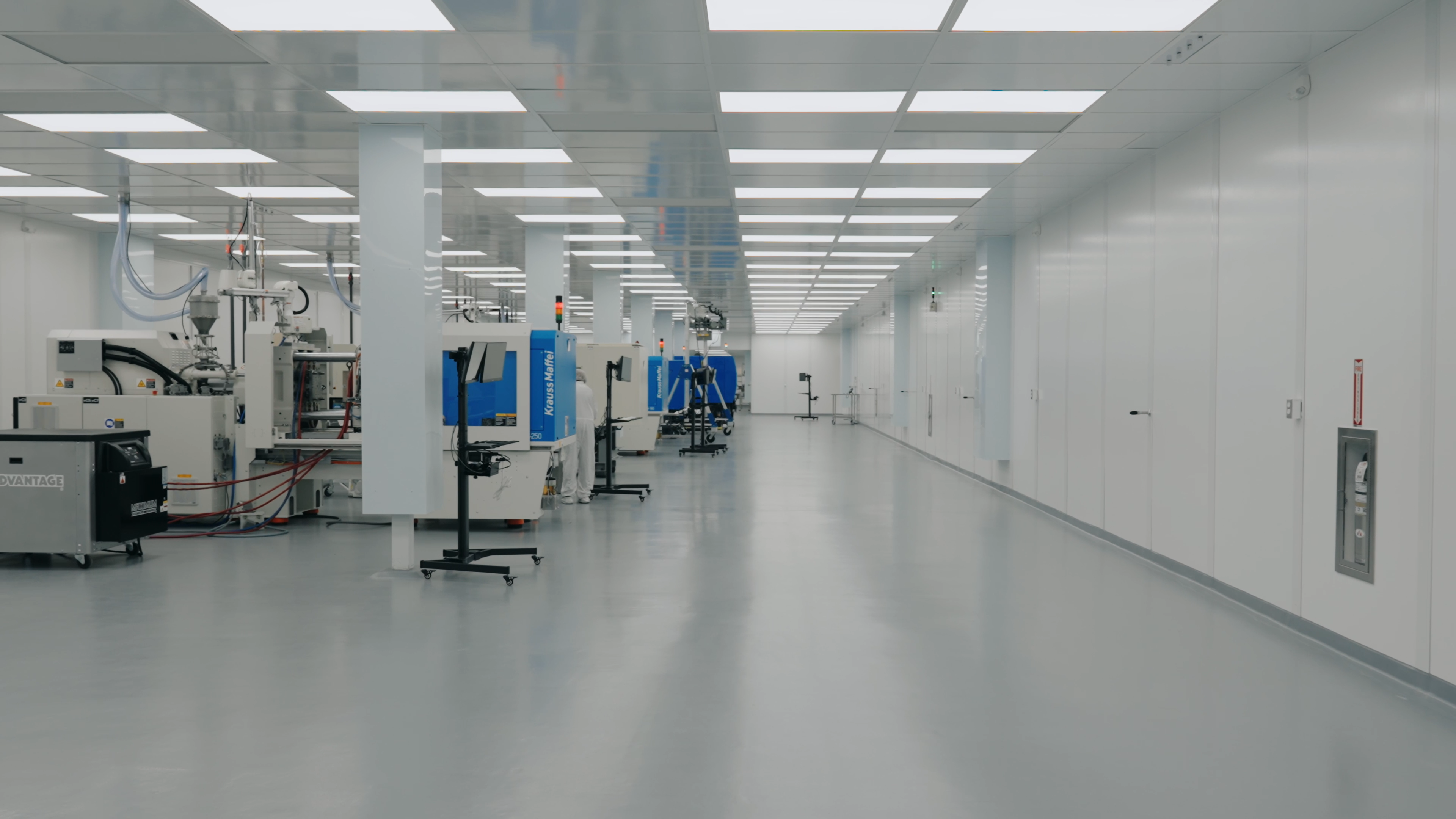
Understand the Types of Sterilization for Medical Device Components
 To better understand the different types of sterilization for medical device components we refer to the Center for Disease Control and Prevention for a definition; "sterilization is the use of a physical or chemical process that destroys all microbial life including the bacterial endospores that are so highly resistant".
To better understand the different types of sterilization for medical device components we refer to the Center for Disease Control and Prevention for a definition; "sterilization is the use of a physical or chemical process that destroys all microbial life including the bacterial endospores that are so highly resistant".
There are a few types of sterilization that can be considered Ethylene Oxide and Radiation. Sterilization using radiation can be gamma, e-beam, or x-ray.
Ethylene Oxide: Medical Plastic Injection Molding Sterilization
Ethylene oxide (EtO Sterilization) is extremely reactive as a gas sterilant. It is highly effective at low temperatures, unlike other sterilization processes. Ethylene oxide sterilization validations are usually performed using overkill methods.
An overkill method means the sterilization processes are designed to kill one million spores of the most resistant organism - bacillus atrophaeus - in just half the regular cycle time.
Ethylene oxide gas is compatible with many materials. It is a contact sterilant, so complex devices having long lumens, mated surfaces or other hard-to-kill environment designs usually require longer exposure for effectiveness. It can be used to sterilize metal and glass surfaces, however, it will not permeate through them.
Ethylene oxide cannot sterilize or permeate liquids. This means that some lubricants present real problems for efficient sterilization. The process for medical plastic injection molding is ideal for custom procedure kits, cellulose, and plastic products that may exhibit discoloration with irradiation. Also - devices manufactured from materials with physical properties that degrade with heat or irradiation and other various materials that are not compatible with other sterilization methods.
Sterilization Using Radiation
Radiation uses a gamma wave, an electron beam, or an X-ray instead of gas. This radiation sterilization process is bio-burden based. This means manufacturers will need to determine the amount of radiation necessary to sterilize their product based on the product’s bio-burden count.
A bio-burden test needs to be performed to determine the correct verification dose needed for the test of sterility before a sterilization dose can be considered validated.
Gamma Sterilization
Gamma rays are the most commonly used method because they can penetrate further into materials. They occasionally collide with an electron which provides the affected electronics with enough energy to destroy the bio-burden.
Gamma rays initiate more high-energy electrons as they travel through the medical device. Gamma radiation has a very high penetration at low dosage rates. Gamma radiation is best suited to treating large batches of many “totes” of boxes over a six to ten hour cycle.
E-Beam Sterilization for Medical Plastic Injection Molding
Electron beams start as very high-energy electrons that destroy bio-burdens directly. These high-energy electrons also collide with other local electrons. The secondary electrons also have enough energy release to adequately destroy a bio-burden.
This results in an increase in the dose. As the e-beam penetrates the medical device, every succeeding collision reduces the energy of the resulting electrons. This continues until there is no penetrating power left in the beam. E-beams have high dose rates with low penetration results.
The e-beam is a continuous sterilization process delivering required doses in one to two minutes as individual boxes pass by the e-beam accelerator. The lower “dwell time” in the e-beam irradiation process is less stressful on materials. The e-beam allows faster turnaround time and more flexibility for delivering specific irradiation doses into small batches of product.
X-Ray Sterilization:
A unique property of X-rays is the narrow angular distribution concentrated in the direction of the product being sterilized. This allows excellent dose uniformity performances compared
with other radiation sterilization procedures.
X-rays offer excellent penetration during sterilization by thoroughly treating the surface and interior of the product. X-rays are an electrical power technology.
Crescent Industries provides medical plastic injection molded components including offering sterilization ready to complete your medical device component.
Topics:
Related Articles
-
Mar 19, 2025
Top 6 Advantages of Injection Molding for Your Project
Read MoreInjection molding — the process of injecting molten resin into a mold — is one of the most...
-
Feb 19, 2025
Injection Molding vs CNC Machining: Which Method to Choose?
Read MoreEvery year, humans produce and use countless plastic products in various shapes, sizes, and...
-
Oct 03, 2024
Injection Molding Uses: Exploring Applications Across Industries
Read MoreInjection molding is one of the most versatile manufacturing processes, with a wide range of...
